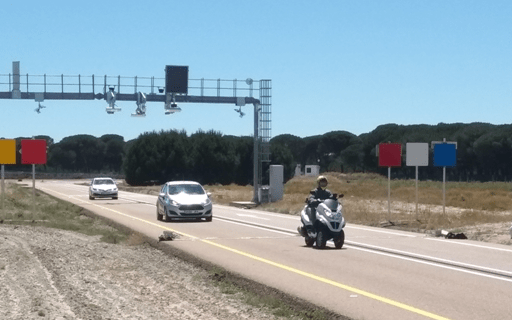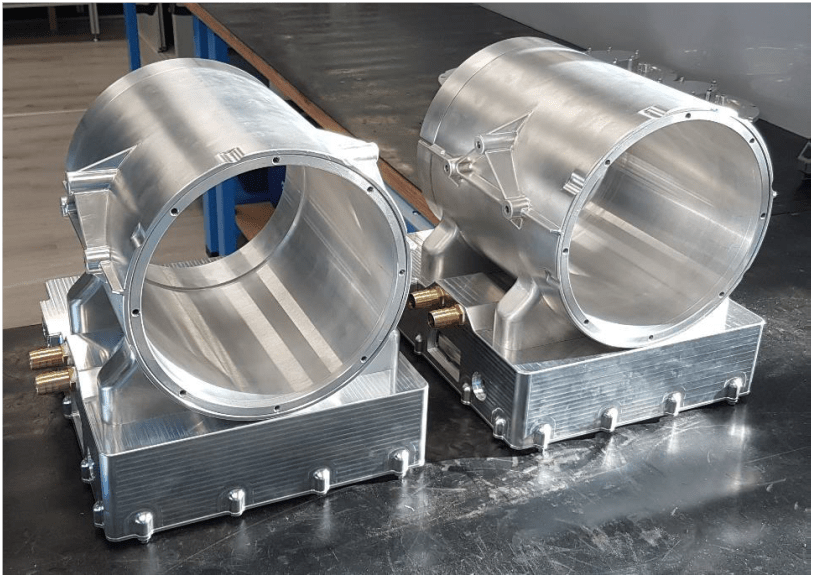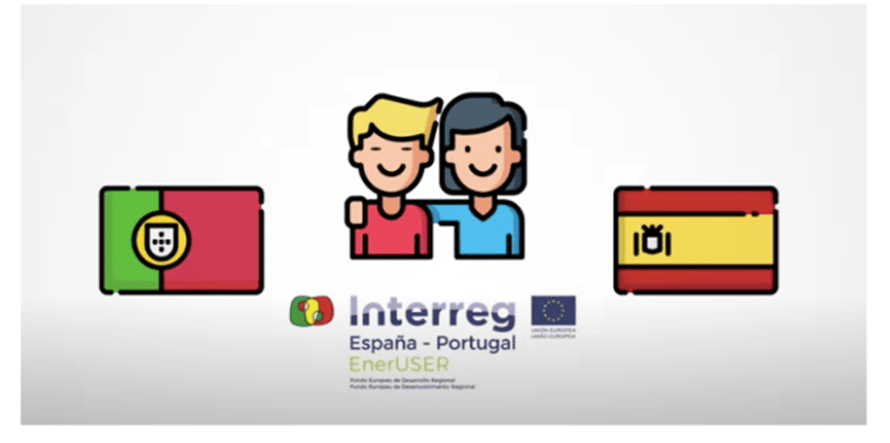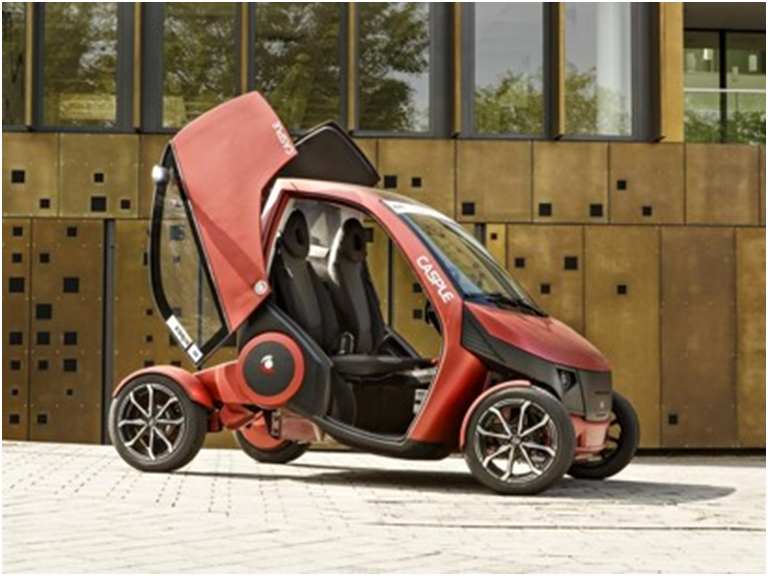by cidaut | Oct 21, 2020 | Sin categoría
European Clean Hydrogen Alliance (ECH2A) was launched earlier this summer, following the European Commission’s presentation of an EU Hydrogen Strategy, and has rapidly grown to over 400 members (companies, research organizations and public authorities). CIDAUT is one of the members that support the alliance within the Research Centers and intends to be present at the working groups that will be organized soon.

ECH2A as a partnership across countries and industries will pave the way for a strong European position in hydrogen technologies and applications. With the alliance, the EU wants to build its global leadership in this domain, to support the EU’s commitment to reach carbon neutrality by 2050. The alliance will establish an investment agenda and support the scaling up of the hydrogen value chain across Europe. The alliance will play a crucial role in facilitating and implementing the actions of the new European hydrogen strategy and in particular its investment agenda. An industry blueprint estimates investments of €430 billion until 2030. It will also be important in the context of the new energy system integration strategy.
But this has not been the only event around hydrogen in which CIDAUT has been present. As a great milestone, last October 6th, the Spanish Government approved the “Hydrogen Roadmap: a commitment to renewable hydrogen“. A total of 78 entities, organizations, associations and individuals have sent contributions to the public consultation of the Hydrogen Roadmap among which is CIDAUT.
With this roadmap, the Government at the proposal of the Ministry for the Ecological Transition and the Demographic Challenge is promoting the deployment of this sustainable energy vector, which will be key to Spain achieving climate neutrality by 2050 at the latest. The development of renewable hydrogen will promote the creation of innovative industrial value chains in the country, technological knowledge and the generation of sustainable employment, contributing to the reactivation towards a high added value green economy.
Some key points to note:
-60 measures & objectives for the implementation of renewable hydrogen by 2030, aimed at the production of renewable hydrogen and the following areas: industry, mobility and the electricity sector or energy storage.
-An intermediate milestone for 2024 is considered: 300-600 MW of installed electrolyzer power.
A great step to advance towards a hydrogen economy in our country, in which CIDAUT will continue working to promote the technological and industrial development of hydrogen.
by cidaut | Jul 23, 2020 | Sin categoría
Sixteen different users have tested the applications developed at SAFE STRIP Project in Cidaut’s facilities
 SAFE Strip Project, funded by the European Commission, is reaching its final stage with the users’ trials. The tests are running at Italy, Greece and Spain, under Cidaut’s responsibility. The Spanish pilots have been performed at Cidaut’s facilities, a controlled test track at Mojados. Six riders and ten drivers have tested nine different scenarios, where the applications developed along SAFE STRIP Project to support the users for a safer, more fluent and more ecologic way of driving have been evaluated.
SAFE Strip Project, funded by the European Commission, is reaching its final stage with the users’ trials. The tests are running at Italy, Greece and Spain, under Cidaut’s responsibility. The Spanish pilots have been performed at Cidaut’s facilities, a controlled test track at Mojados. Six riders and ten drivers have tested nine different scenarios, where the applications developed along SAFE STRIP Project to support the users for a safer, more fluent and more ecologic way of driving have been evaluated.
The solution developed can be used in any kind of vehicle, independently from its automation level, because the information can directly reach the vehicle for the higher automation levels or be presented to the users through a friendly HMI in their portable devices, iOS or Android, for the lower levels. Most of the applications tested at Cidaut are related to safety: vulnerable road user protection, wrong way driving, motorway exit, work zone detection and variable message signal for low visibility, liquid on the road or heavy traffic. Others are oriented to improve the users comfort, the traffic flow and to reduce the environmental impact, like the virtual toll or the parking and charging application.
The system is based on the use of low cost components and sensors that thanks to different communication technologies provide intelligence to the transport system, obtaining as a result the cooperation between the different users of the road and the infrastructure. All the information provided by the different stakeholders is sent to a server in the cloud where all the information is managed and suitable messages are sent to the users through a friendly HMI with simple pictograms to improve safety, traffic flow and efficiency.
The applications tested allow the driver to be aware of critical situations like a hidden pedestrian crossing the road, a vehicle driving in the wrong direction, a vehicle stopped in a motorway exit, sliding pavement, lane closed due to road works, heavy traffic in front or low visibility. There are also applications dedicated to the comfort of the users, because the system allows the user to pay the toll on the air, without stopping or going through complex gates. With the solution developed is also possible to receive information about available parking slots and to make the payment totally automatically, without walking to the park meter nor having to start and stop the application, because it works automatically when the vehicle is parked.
The tests have allowed to evaluate in real conditions the performance of all the applications and also to measure the acceptance of the future users.
by cidaut | Jul 23, 2020 | Materials
Last March, ReFreeDrive Consortium should have celebrated the 30-months General Assembly meeting at IFPEN premises (Paris, France). Unfortunately, the strike of coronavirus pandemic in Europe was at its peak by those dates, which forced serious travel restrictions and made impossible to celebrate a face-to-face meeting as originally planned. Instead, a virtual General Assembly meeting was carried out on 17th March.

This time, the meeting had two main aims. Firstly, to evaluate the impact of the pandemic on each of the partners’ activities and try to figure out to which extent ReFreeDrive’s ongoing project tasks would be affected. And secondly, to monitor and share the results of the tasks carried out in the previous months.
At this point, the e-drive design is finished, including not only the motors, but also the power electronics and its conceptual in-vehicle integration, for both 75 kW and 200 kW applications. Now the focus is on manufacturing and testing activities. Permanent magnet-assisted synchronous reluctance prototypes have been already successfully manufactured, and now we are waiting for the re-opening of experimental facilities to begin testing activities. For the other cases (pure synchronous reluctance motor, die-cast induction motor and fabricated induction motor) some delays will be experienced, so we will work hard in the upcoming months to minimize their impact on the project development. Besides, all components required for the powertrain testing and integration such as gearbox and battery pack have been selected.
Therefore, in the following months it is planned to finalize the manufacturing of the pending prototypes, as well as its testing. Then it will be time to integrate them in the target vehicles and demonstrate its operation in a real environment.
by cidaut | Jul 23, 2020 | Energy
With a pleasant and explanatory video that aims to raise awareness of the great problem of energy consumption in homes (which in addition to being a high expense for citizens contributes to climate change), EnerUSER presents its commitment to ensuring that users can perform effective energy management.

This cross-border cooperation initiative between Spain and Portugal, co-financed by the European Regional Development Fund (ERDF) through the Interreg VA Spain-Portugal Program (POCTEP) 2014-2020El, is coordinated by the Construction Institute of Castilla y León ( ICCL) and whose partners in this project are IPB of Bragança, the Castilla y León Natural Heritage Foundation (FPNCYL), FENAGE, CIDAUT, and the Bragança City Council.
One of the objectives of the EnerUSER project is to promote new energy consumption habits, being the citizen a decisive element, relying on surveillance and control tools that will allow them to make decisions. With innovative energy control technologies that the project is going to develop, EnerUSER seeks to help citizens learn about the quality of indoor air, its energy consumption and the high cost it entails for families to propose a change, particularly in housing and / or social rent. Through new consumption habits and the empowerment of the citizen in energy control, EnerUSER will present fundamental measures in the current circumstances of climate change and energy efficiency that the citizen must take.
The video is available through the project website: https://www.eneruser.com/noticias) and: https://www.youtube.com/watch?v=tisbYXQlum8.
by cidaut | May 12, 2020 | Sin categoría
Cidaut has successfully finished CERO Project, with the cooperation of three automotive companies from Castile and Leon region: Grupo Antolín Ingeniería, ZF TRW and Casple S.A. The project has been funded by the “Instituto para la Competitividad Empresarial”. The main objective achieved thanks to the development of the project has been the research and development of new urban mobility solutions based on the integration of connectivity, automation and electrification. Cidaut considers that the electrification of the mobility should start in the urban environment for several reasons: importance of the air quality in cities, better energy performance of electric vehicles in urban driving conditions and easiness for infrastructure access. In several phases of the project, Casple’s urban electric vehicle prototype has been used to demonstrate the results achieved.S.A.

The project has been divided in three main tasks, the first one oriented to determine the needs of the future urban electric vehicles, the second aimed to obtain integral safety for this kind of vehicles and the third one looking for the enhancement of the communication capability of vehicles and infrastructure. The first task has allowed to establish a deep knowledge about the new urban transport needs from last mile logistics to mobility as a service solution that will have to overcome the tight mobility restrictions that will be progressively applied in different cities in the coming years and that have been also analyzed along CERO Project.
The second activity has covered all the aspects relative to safety from an integral point of view. The automated driving blurs the limit between active and passive safety, integrating both with the final objective of reducing the fatalities to CERO. The project has advanced in this direction presenting innovative solutions not only for the occupants but also for other vulnerable users of the road. In collaboration with ZF TRW, new restrain systems for automated driving levels 3 and 4 have been developed taking into account the new positions of the occupants in the automated vehicles. The pedestrians and cyclists safety has been improved through the development of artificial vision solutions, which identifies this kind of users, evaluates the risk of accident and alerts the vulnerable user and the driver/car (depending on the degree of automation) about the possible accident.
Finally low cost communication solutions have been developed for V2X applications. The solution adopted has allowed the implementation of different advanced solutions that will allow to increase the safety, improve the traffic flow and reduce the environmental impact of the traffic. Some of the communication applications tested along CERO project are: traffic jam detection, information about road works, allocation of points of interest, and speed recommendation to optimize green light flux.




